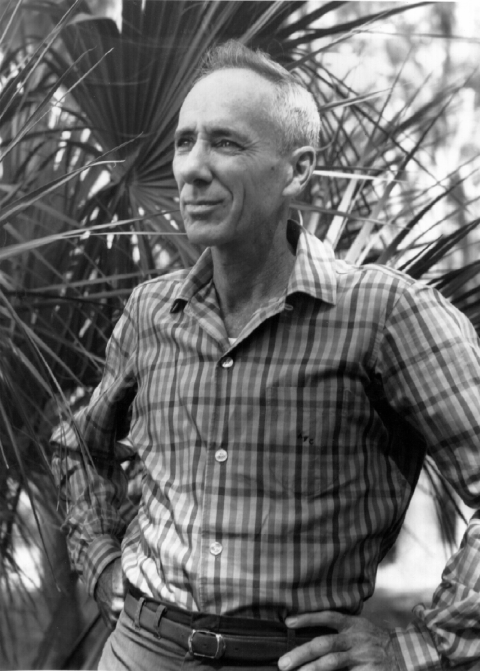About Us
The Archie Carr National Wildlife Refuge stretches across 20.5 miles of beach and shoreline habitat between Melbourne Beach and Wabasso Beach along Florida's east coast in Brevard and Indian River Counties. The refuge was established in 1991 and was named after the late Dr. Archie Carr, Jr., in honor of his extraordinary contribution to sea turtle conservation. The Refuge is a direct result of Dr. Carr bringing attention to the world's declining turtle populations due to over-exploitation and loss of safe habitat. The Refuge hosts a variety of birds, reptiles, fish, mammals and invertebrates including brown pelicans, sea turtles, gopher tortoises, snakes, manatees, and crabs that make their homes in the ocean as well as on several habitats including the beach and dunes, coastal strand and scrub, maritime hammock, and mangroves.
The refuge was designated to protect habitat for what is the most significant area for loggerhead sea turtle nesting in the world, and the most significant area for green turtle nesting in North America. This represents 20-35% of all loggerhead and green sea turtle nests in the US. It also serves as a minor nesting area for the leatherback sea turtle, which is one of the world's largest and rarest sea turtles. The long stretches of quiet, undisturbed sandy beaches, with little or no artificial light, are essential to the reproductive success and survival of the 15,000 to 30,000 sea turtles nests we receive annually.
The 258-acre refuge is also unique for its placement within a patchwork of protected lands and among properties that have already been developed. To help preserve this globally important nesting ground the Service has established a partnership with state and county governments and private conservation groups to acquire and manage this dune habitat. The primary management thrust is to provide long term protection of this habitat for sea turtles and other listed species as well as providing compatible public use. Collaboratively, this partnership, known as the Archie Carr Working Group has protected over 2,600 acres and continues to educate thousands of residents and visitors about the unique characteristics of the barrier island ecosystem.
Our Mission
Each unit of the National Wildlife Refuge System is established to serve a statutory purpose that targets the conservation of native species dependent on its lands and waters. All activities on those acres are reviewed for compatibility with this statutory purpose.
The purpose(s) of Archie Carr national Wildlife Refuge is. . .
"... for use as an inviolate sanctuary, or for any other management purpose, for migratory birds." 16 U.S.C. § 715d (Migratory Bird Conservation Act)
"... suitable for— (1) incidental fish and wildlife-oriented recreational development, (2) the protection of natural resources, (3) the conservation of endangered species or threatened species ..." 16 U.S.C. § 460k-1 "... the Secretary ... may accept and use ... real ... property. Such acceptance may be accomplished under the terms and conditions of restrictive covenants imposed by donors ..." 16 U.S.C. § 460k-2 (Refuge Recreation Act (16 U.S.C. § 460k-460k-4), as amended).
Our History
The refuge's namesake, Archie Fairly Carr, Jr., was an American herpetologist, ecologist and a pioneering conservationist. In 1987 he was awarded the Eminent Ecologist Award by the Ecological Society of America.
Born: June 16, 1909, Mobile, AL
Died: May 21, 1987, Micanopy, FL
Education: University of Florida
Children: Archie Carr III
Archie Carr was a University of Florida Graduate Research Professor of Zoology and was associated with the University for more than fifty years. His entire career was spent at the University of Florida, first as a student, B.A. (1932), M.S. (1934), and as the University’s first Ph.D. (1937) in zoology.
His ability to translate science into literature brought the first international attention to the plight of sea turtles. He wrote 11 books and over 120 scientific articles about sea turtles and their habitats before his death in 1987. His work and writings ranged throughout Florida, the Caribbean, and Africa. After his death, he was honored with the creation of the Archie Carr National Wildlife Refuge in Florida and the Dr. Archie Carr Wildlife Refuge in Costa Rica.
Archie Carr published his first paper on sea turtles in 1942, but it was not until he wrote his classic Handbook of Turtles (1952) that he began to focus his research on sea turtles. He described his early discoveries about the plight of sea turtles in his book The Windward Road particularly in his chapter The Passing of the Fleet, which was a call to arms and resulted in global efforts to conserve sea turtles from extinction.
Archie Carr was one of those rare individuals who could inspire both scientific and general public audiences with his writings. His genius and creativity were allowed full scope because the University of Florida awarded him a graduate research professorship in 1959, essentially freeing him of all responsibilities so that he could pursue his research and writing. He repaid that investment many-fold.
Source: University of Florida; http://accstr.ufl.edu/accstr-overview/our-history/
Other Facilities in this Complex
Archie Carr National Wildlife Refuge is managed as part of the Everglades Headwaters National Wildlife Refuge Complex.

